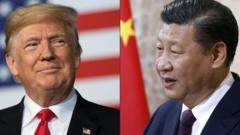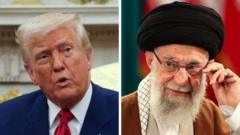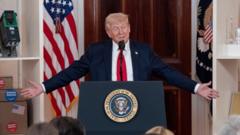Trade relations between the U.S. and China are at a standstill, marked by uncertainty over communication. The absence of clarity on tariff discussions is fueling speculation and anxiety in global markets.
U.S.-China Communication Breakdown: What It Means for Global Trade

U.S.-China Communication Breakdown: What It Means for Global Trade
As trade tensions escalate, the lack of dialogue between the U.S. and China raises concerns over future negotiations and economic stability.
The ongoing trade conflict between the United States and China has reached a critical juncture, characterized by a notable lack of effective communication. This silence between the two largest economies in the world raises significant concerns regarding their ability to engage in productive negotiations.
During a recent economic briefing, Treasury Secretary Scott Bessent was notably evasive when queried about the accuracy of President Trump's assertion that President Xi Jinping had reached out to him. In a lighthearted remark, Bessent dismissed the notion that he kept track of the President's communications, underscoring the lack of transparency in high-level dialogue.
With tensions flaring, the ambiguity around whether any back-channel discussions are occurring has become a point of contention. Markets are closely monitoring the situation, anxiously awaiting definitive signs of negotiations, especially concerning the critical issue of tariffs.
Guo Jiakun, a spokesperson for China’s foreign ministry, clarified the situation last Friday, stating that there have been no consultations or negotiations on tariffs between the two nations. He urged the U.S. not to mislead the public regarding the state of communications, further complicating the perception of U.S.-China relations.
These developments highlight the fragile state of global trade agreements and how deeply intertwined the economies of these superpowers are—raising questions about the ramifications of this communication breakdown for international markets and trade policies moving forward.




















